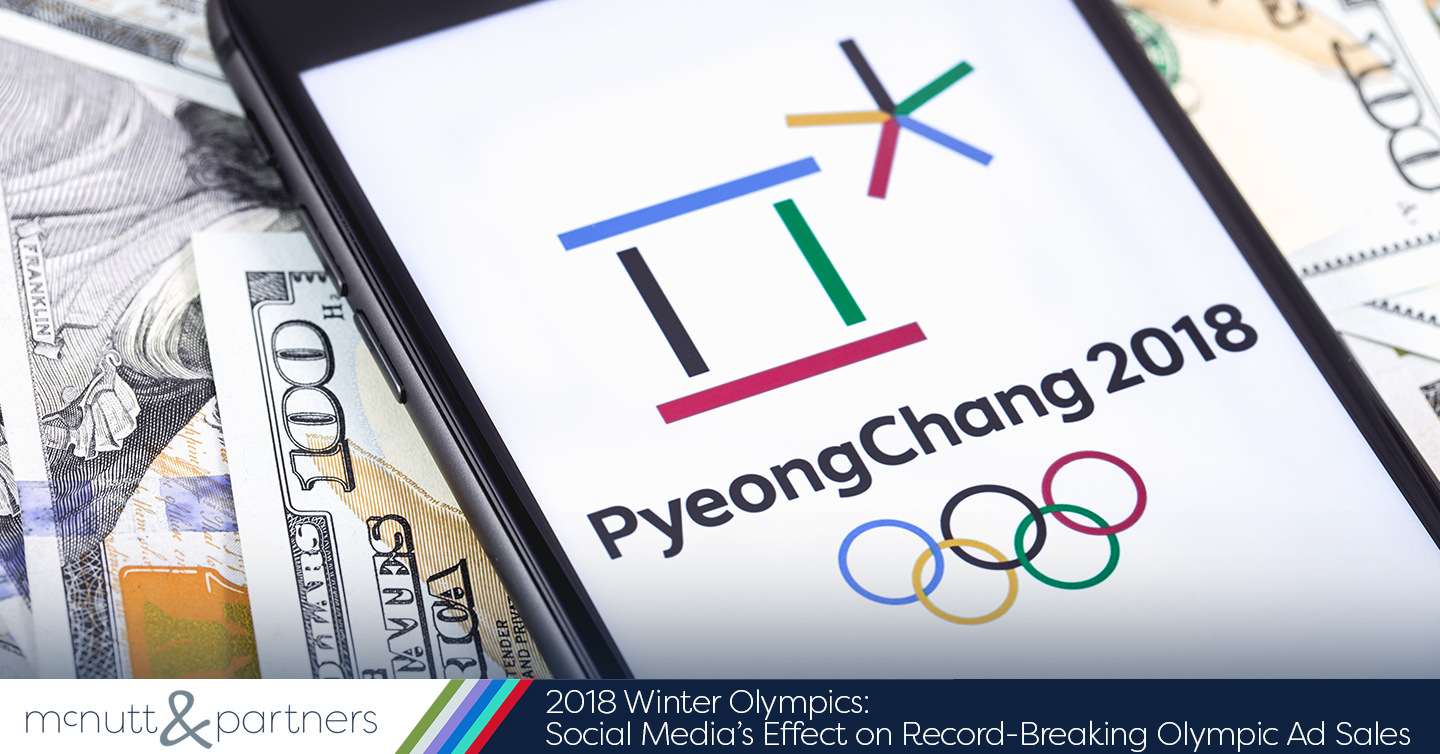As American athletes like snowboarder Shaun White and skier Mikaela Shiffrin invert and slalom their way to Olympic Gold medals in Pyeongchang, South Korea, during the 2018 Winter Olympics, the advertising world is noticing how modern marketing mediums are impacting the event’s advertising trends. According to the NBC Sports Group, U.S. national advertising sales for the Olympics in Pyeongchang have surpassed $900 million, which marks a record for ad spending in the Winter Games. This ad spending will be stretched over more than 2,400 hours of coverage across the 18 days of the Winter Olympics, and it’s a number that could continue to grow.
With the 2018 Winter Olympics being consumed by viewers differently than the Olympics ever have before, it makes sense that the event is yielding the highest advertising numbers to date.
Think about it. Before the internet, the only way that viewers abroad could participate in watching the Olympics was via their television screens. Today, more people are watching YouTube videos on a daily basis than they are watching cable. That means smart phones, tablets and computer screens have taken precedence in the way we consume our entertainment, including the Olympic Games. For advertisers, that means the opportunity to reach audiences across various digital mediums like social media.
The history of social media and the Olympics
Social media is a global connector—a quality for which the Olympics are the ideal platform. Using social media, Olympic viewers over the past few games have been able to take their discussions of the event beyond just the competitions themselves.
For example, prior to the 2014 Winter Olympics in Sochi, Russia, the hashtag “#SochiProblems” was trending on social media in reference to the inadequate facilities that Olympic athletes arrived to. The same was true for the 2016 Summer Olympics in Rio de Janeiro, as some athletes and supporters were apprehensive to attend due to the prevalence of the Zika virus in the country and violence, crime and political unrest in the area where the games were to be held. In 2018, tensions with North Korea have been a social media topic of discussion.
The point? That social media has served as a platform for Olympics fans to discuss matters pertaining not just to the competition itself, but to the entire culture of the event.
Diversifying Olympic advertising
Among the biggest advertising spenders during the 2018 Winter Olympics’ Opening Ceremonies were brands like Apple, Coca-Cola, Chevrolet, Samsung, VISA and others. Of course, NBC plugged itself as well, showing promos for “The Voice” and “Today.” These big names are not exactly surprising when it comes to an event with such global significance.
Despite this, reports have revealed that big-name Olympic advertisers like General Motors, Procter & Gamble and AT&T—the top three TV ad spenders in the U.S. during the 2014 Winter Games—were expected to spend less on advertising during these Winter Olympics than they did in 2014—for a variety of reasons. One of those reasons is due to changes in media consumption and advertisers wanting to move toward more targeted, digital platforms as a result.
With some bigger brands ramping down their Olympic advertising efforts, it leaves room for other advertisers to step in. Of the $900 million-plus Olympic advertising spending this year, (which includes digital spending), 60 percent of that money is coming from new advertisers. This shows that not only are the Olympics still relevant to advertisers, but that the now more diverse ways for advertisers to spend their money appeals to varying budgets—not just those who can afford the $700,000 to $750,000 for a 30-second primetime TV spot during Olympic coverage.
It’s also important to note that NBC did not guarantee audiences for advertisers during these Olympics based on household rating, which is how ad inventory in the Olympics is usually sold. Instead, it encompassed viewership beyond traditional television to include both TV and non-traditional platforms like apps and streaming devices. This was likely also a reason for the increased percentage of new advertisers in these 2018 Winter Olympics.
And then there’s Rule 40
Rule 40 is a bylaw in the Olympic Charter that restricts many facets of public references to the Olympics strictly to paid sponsors. That means that non-sponsor athletes and brands that mention words like “Olympics,” “Team USA” or even “Pyeongchang” in their marketing efforts, including social media, can technically be sued by the Olympic Committee.
Why the harsh restrictions? The Olympics are expensive, and sponsorship revenues help pay for them. Thus, the Olympic Committee strives to do everything in its power to protect the integrity of the sponsorships it does sell—and how those sponsorships translate to the public eye.
Brands that aren’t official sponsors can still benefit from the Olympics in their marketing efforts, they just have to follow the rules, which are restrictive. For example, depending on the context, a brand may
get in trouble for mentioning the words “victory,” “games,” “medal,” “bronze,” “silver” and “gold” in their marketing. Here’s a Rule 40 document outlining more guidelines.
One strategy you can use is to plan your regular social media ads and posts around times when anticipated Olympic events are set to air, which is when more people will likely be utilizing social media. With all eyes on the 2018 Winter Olympics, the Games should no doubt be on your radar!
For your digital marketing or traditional advertising needs, contact the McNutt & Partners team today at 334-521-1010 or visit our contact page.

